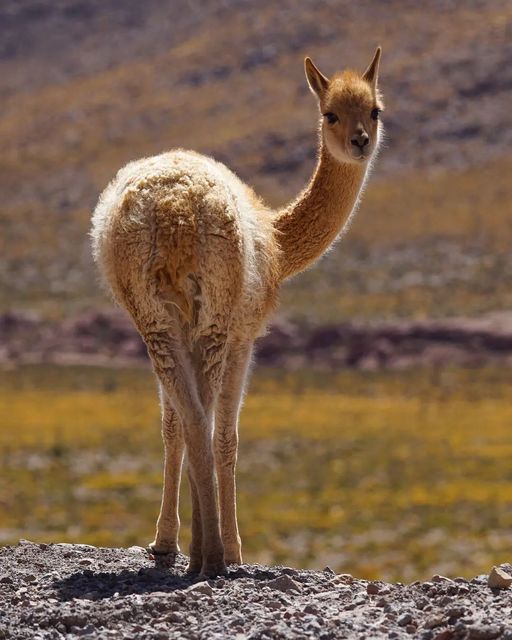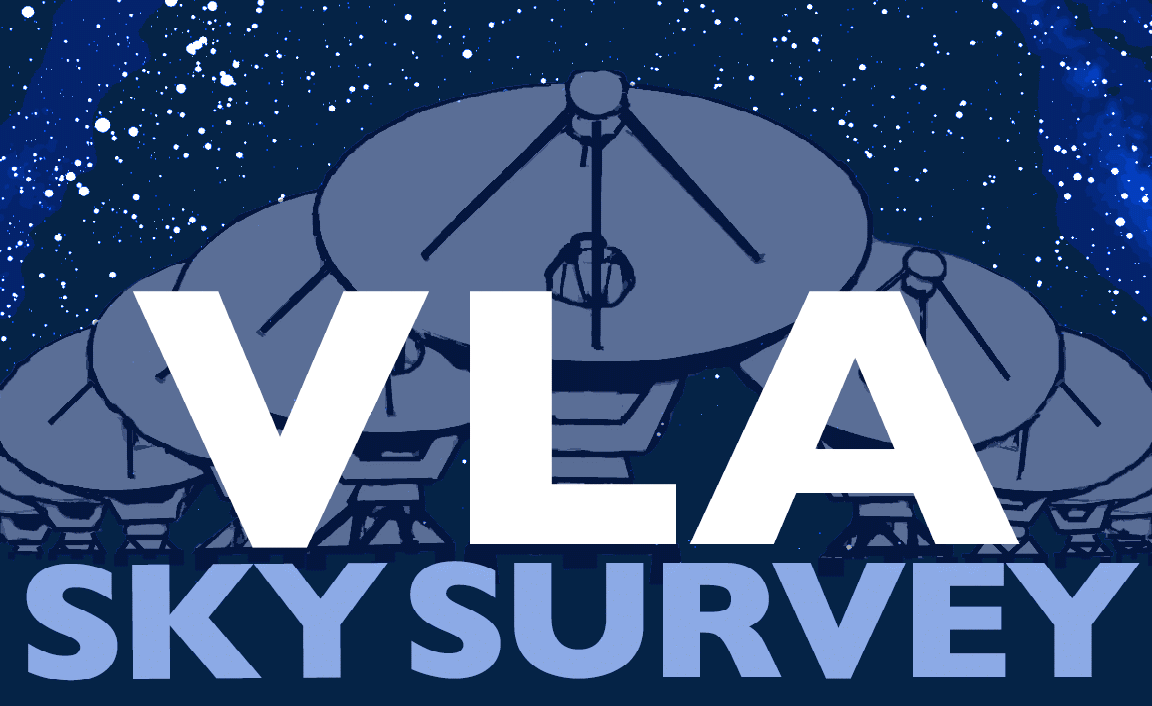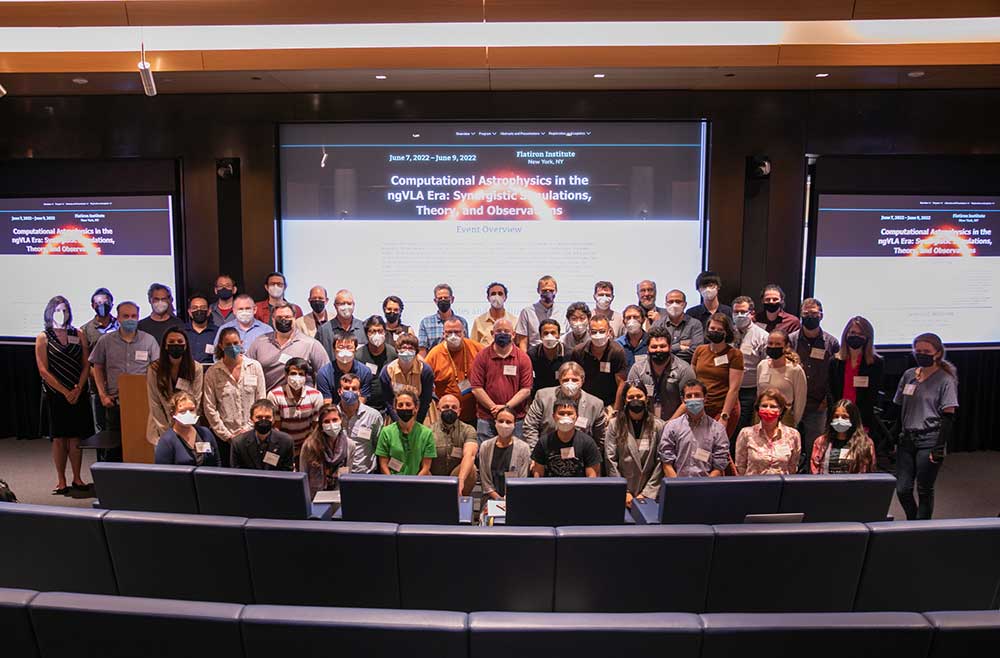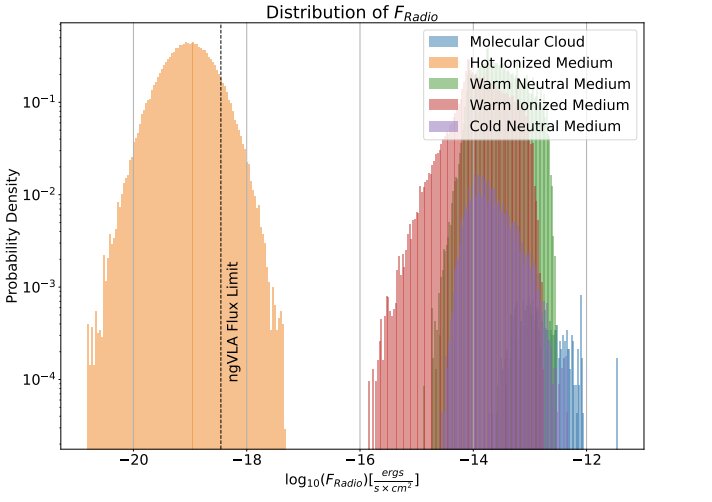NRAO eNews
Volume Vol#, Issue Iss#
Day# Month# Year#
NRAO eNews
Volume Vol#, Issue Iss# • Day# Month# Year#

Upcoming Events

Community Webinar Series: VLA/VLBA Call for Proposals Update for Semester 2023A
Jul 14, 2022 | Virtual

Community Webinar Series: Cube Analysis and Rendering Tool for Astronomy (CARTA)
Aug 25, 2022 | Virtual

The VLA Sky Survey in the Multiwavelength Spotlight
Sep 7 - 9, 2022 | Socorro, NM

From Cells to Galaxies: Exploring the Synergies between Radio Astronomy & Medical Imaging
Sep 21 - 23, 2022 | St. Paul, MN

9th VLA Data Reduction Workshop
Oct 11 - 20, 2022 | Socorro, NM
NRAO Call for Proposals: Semester 2023A

The National Radio Astronomy Observatory (NRAO) invites scientists to participate in the Semester 2023A Call for Proposals for the Karl G. Jansky Very Large Array (VLA) and the Very Long Baseline Array (VLBA), High Sensitivity Array (HSA), and Global 3mm VLBI Array (GMVA).
The submission deadline for Semester 2023A proposals is Monday, 1 August 2022, at 17:00 EDT (21:00 UTC).
We would like to highlight that the AGN science category will be split into two in order to manage the increasing number of proposals received in this science area. Please see News & Opportunities for more information.
Proposal preparation and submission are handled via the NRAO Proposal Submission Tool (PST) available at NRAO Interactive Services. Proposers who need assistance with proposal preparation or have questions regarding the Call for Proposals or NRAO telescope capabilities should contact Observatory staff via the NRAO Helpdesk. Note that using these tools (both the PST and the Helpdesk) requires registration.
ALMA Program News

Pablo Carrillo
Although the Atacama Desert is among the world's most arid, many species call it home. Here we see a vicuna, native to the higher elevations and a common visitor at the ALMA site.
[click to enlarge]
Cycle 8 Science Operations
ALMA will shortly move from its current C5 Cycle 8 configuration to the C6 Cycle 8 configuration, as scheduled in late June/early July, before contracting again. In C6 configuration, baseline lengths in the 12m array span 15-2500m, for a main beam size at 3mm of 0.3 arcsec. Weather has been generally good with daily subfreezing temperatures and occasional wind and/or snow as is normal for midwinter.
A report on Cycle 9 proposal submission statistics is available. The process of refereeing and selecting Cycle 9 proposals for the observing queue is under way. Results will be available in August. Cycle 9 is currently scheduled for observations from October 2022 to September 2023.
The ALMA Configuration Schedule for Cycles 9, 10, and 11 has been published.
ALMA Science Sustainability
A Call for Proposals for ALMA Development Studies was released 9 May 2022. There was an Informational/Coordination Meeting on 7 June 2022; see the Call for Proposals for more information. The Mandatory Notice of Intent deadline occurred 14 June. Proposer’s Questions were submitted no-later-than 7 July.
The deadline for proposals was 12 July 2022 for funding to run 1 January–1 October 2023, depending on the U.S. Federal budget process. Principal Investigators (and funded co-investigators) for North American ALMA Development projects or studies must have as their primary affiliation a U.S. or Canadian institution. Notices of Intent were received from among 42 potential investigators at 19 institutions; all ALMA partners were represented.
VLA Sky Survey Update

Progress on the VLA Sky Survey (VLASS) was reviewed in May by an external panel led by Prof. Andrew Baker of Rutgers University, who chaired the original science community review of VLASS in 2015. The panel strongly endorsed observations for the 3rd epoch of the survey that will start in January 2023. The panel also made several useful recommendations regarding the resourcing and timeline for delivery of the higher quality Single Epoch (SE) products, including the polarization cubes.
The VLASS project has recently begun producing Stokes I SE continuum images, which are a prerequisite for polarization cube production. The SE continuum images are a significant improvement over the existing Quick Look images, and include self-calibration, better cleaning, and spectral index information. The in-band spectral indices for these SE continuum products are not intended to be highly-accurate, especially for extended emission, but spectral indices of unresolved, or barely resolved, source components with signal-to-noise > 30 should be accurate to ±0.2. The first few hundred SE images generated from VLASS2.1 observations are now available from the VLASS cache and will be added to as resources permit. The pipeline for making the polarization cubes is now being validated, and cube production is scheduled to begin in August.
ngVLA Project News

Emily Tan
Conference attendees
[click to enlarge]
Computational Astrophysics in the ngVLA Era: Synergistic Simulations, Theory, and Observations
Held 7-9 June 2022 at the Simons Foundation's Flatiron Institute in Manhattan, New York, USA, this conference brought together 80+ theoreticians, modelers, and observers (see figure). Their 50+ presentations dealt with the computational astrophysics and observational challenges for the next generation of observatories, with a focus on the next generation Very Large Array (ngVLA).
The conference website offers access to abstracts of the presentations and will soon offer access to video recordings of the presentations.
We are grateful to the Flatiron Institute for their smooth logistical support and to the Scientific Organizing Committee, especially Alberto Bolatto and Rachel Somerville, for assembling a vibrant science program.
Searching for Wandering Intermediate-Mass Black Holes in the Milky Way with the ngVLA

Probability density plot of radio flux densities from IMBHs simulated in five different Milky Way environments. Adapted from Seepaul et al. 2022.
[click to enlarge]
To date, our telescopes have captured photons traveling from the environment surrounding stellar-mass and supermassive black holes within the confines of our Galaxy. We have detected stellar-mass black holes in X-ray binaries and wandering, and we now have a direct image of the supermassive black hole at the center of our Galaxy, Sgr A* (Akiyama et al. 2022).
Black holes with a mass intermediate between those two well-known categories, called intermediate-mass black holes (IMBHs), thus far have been detected in the central regions of dwarf galaxies. However, recent studies suggest that IMBHs, with masses typically between 10,000 and 1 million solar masses, may be lurking locally (see, e.g., Greene et al. 2021). Yet we still have not detected any IMBHs in the Milky Way.
If wandering IMBHs do exist in our own Galaxy, their elusiveness is probably attributed to gas accretion from the interstellar medium at extremely low rates. In our paper (Seepaul et al. 2022), we model the accretion and the emission properties of IMBHs of 100,000 solar masses wandering in the Milky Way. To account for the low accretion levels, we use a code to simulate the emission in the regime of advection-dominated accretion flows.
Our study reveals that a staggering ~57% of a putative IMBH population, distributed uniformly in our Galaxy, can be detected with the next generation Very Large Array (ngVLA, see figure). In particular, IMBHs wandering inside molecular clouds and cold neutral medium environments should always be detectable by the ngVLA. The ngVLA is even able to probe the very-low IMBH flux densities coming from the sparse hot ionized media. Our study represents a first step towards uncovering the last remaining population of black holes in our Galaxy.
Since 2015 the acronym ngVLA has appeared in 800+ publications indexed in the SAO/NASA Astrophysics Data System. This article continues a regular feature intended to showcase some of those publications. We are especially interested in showcasing work done by early-career researchers. The collection of showcase articles can be viewed online. Anyone wishing to volunteer to author a feature should contact Joan Wrobel.
Updates to the NRAO Data Archive, Development Roadmap, and Feature Requests
A new version of the NRAO Archive Access Tool was released on 22 June 2022, adding some significant useability improvements. The principal changes are described below.
- It is now possible for users with visitor accounts to have local delivery of datasets to their areas on the Lustre file systems in Charlottesville (ALMA data only) and New Mexico (VLA and VLBA data).
- Individual VLBA observations are now organized into their correlation segments when viewed within the archive interface.
- Select All capability is implemented for VLBI and VLA Science Data Model (SDM) downloads (a user may need to increase the number of files/SDMs shown on a page for the button to appear).
- Faster data staging processes have been implemented, and the tar file delivery has been turned-off by default. The tar-creation process itself makes data requests take ~ twice as long. The download of untarred data can be accomplished using wget commands; see the archive documentation pages for the VLA and the VLBA.
We recognize that the retirement of the legacy archive tool and the transition to the new tool has presented some challenges to our users. As such, we remind our users to communicate any issues through the NRAO science helpdesk. Furthermore, we wish to emphasize that we are aiming to continuously improve the new archive tool. To communicate the future plans for the archive, we have created a new webpage that describes the priorities for archive development over the next year. We also encourage our users to request features that they would like to see in the new archive tool through the Archive Tool Feedback department of the NRAO science helpdesk.
SCHED 11.7 Released
SCHED 11.7 has been released and is available on the NRAO ftp at ftp.aoc.nrao.edu/pub/sched. The main improvement for this release is the inclusion of new setups and examples supporting 4 Gbps observations with the Very Long Baseline Array (VLBA), and a new default source catalogue (used if SRCFILE is not set) based on icrf3 positions.
Users with multi epoch observations that started with SCHED 11.5 may wish to continue using SCHED 11.5. Users with multi-epoch observations started with SCHED 11.6 should ensure they have set srcfile as needed, or include their own SRCCAT.
See the SCHED Manual for further information on changes and examples.
Monitoring VLA Calibrator Flux Densities
The use of suitable complex gain calibrator sources is essential to properly calibrate interferometric radio data. In addition to knowing their accurate positions, this suitability depends on the flux density of these–mostly variable–calibrators. To help our observers pick appropriate calibrators at the time of their observations, the NRAO is pleased to announce the release of the first version of the Very Large Array (VLA) calibrator monitoring/mining web site. The reported flux density values of the VLA calibrators have been extracted via automated processes from both science and test executions observed since 2017 and processed by the Common Astronomy Software Applications (CASA) calibration pipeline. The calibrator monitoring/mining database is updated semi-monthly with new measurements.
Each calibrator source at this web site is presented with a graph showing the spectral behavior over the observed VLA receiver bands, and the measured flux densities as a function of time. The values are also tabulated. In addition to data points since 2017, the web site also includes pre-Expanded VLA flux density values, measured by the on-line system, covering the period between ~ 2000 and 2007, when available. Whereas we know of some obvious systematic irregularities in the measurements, work is in progress to resolve them in future updates.
For questions or suggestions, please contact the NRAO helpdesk.
Recent Media Releases
From the Archives
Ellen Bouton

[click to enlarge]
About this month's photo: The NRAO Charlottesville library and adjoining breezeway were for many years the venue for various parties and celebrations. This 29 July 1983 event was a farewell to Sarah Stevens-Rayburn as she left the NRAO library for the Space Telescope Science Institute library. [From the left]: Nancy Wiener (white shirt), Adair Lane (blue and white shirt, back to camera), Dan Stinebring, Barbara Williams, Barry Turner. Standing behind the table: Jim Ulvestad (red shirt with tie), Eric Greisen, Alan Bridle. Tom Armstrong (red shirt, no tie) is on the right.
From the Archives is an ongoing series illustrating NRAO and U.S. radio astronomy history via images selected from our collections of individuals' and institutional papers. If readers have images they believe would be of interest to the Archives, please contact Ellen Bouton.

